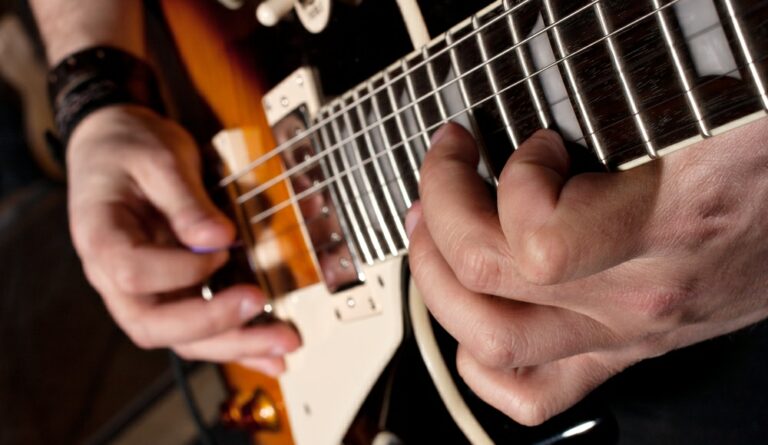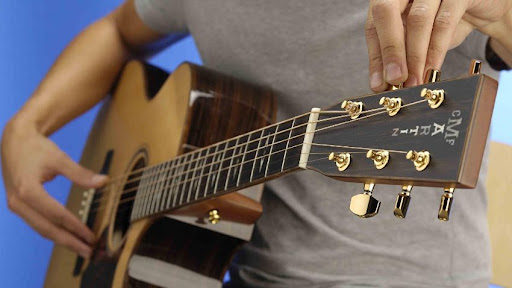How to Keep Your Guitar in Tune: A Complete Guide for Beginners
One of the most fundamental aspects of playing guitar is ensuring that your guitar is in tune. Whether you’re strumming open chords on an acoustic or shredding leads on an electric, being in tune directly affects your tone, technique, and ear training.
This comprehensive guide will walk you through the basics of tuning your guitar, the tools available, understanding intonation, and exploring both standard and alternative tunings. It is an essential and important skill you need to have from day 1. Lets go!
Why Is It Important to Keep Your Guitar in Tune?
Keeping your guitar in tune is essential for several reasons:
- Sound Quality: A guitar that is even slightly out of tune can sound unpleasant and dissonant.
- Learning Accuracy: Beginners rely on auditory feedback. An out-of-tune guitar can hinder your ability to develop relative pitch and muscle memory.
- Playing with Others: When playing with a band or a backing track, tuning is crucial for harmony and cohesion.
- Professionalism: Whether practicing or performing, tuning demonstrates care and attention to your instrument.
Your guitars tuning stability relies on a few basic factors so you have to be aware of them at the beginning so your always aware of your guitars tune. Temperature & Humidity play a big part in how the guitar reacts to a tune that has been applied.
It is a good practice to take your much loved guitar out of its case and let it sit on a stand for a few minutes before tuning it and playing it. Tuning your guitar at home then pulling out to play in the bright sun or damp rain soek environment will pretty much destroy the tuning.
Why does it change and not stay in tune? Well it’s pretty simple, because your guitar is normally made of wood the wood reacts to temperature and air pressure changes. The neck bends a little in reaction to any temperature or humidity changes so the tension on the strings changes this the pitch changes.
How to Tune a Guitar as a Beginner
Tuning a guitar involves adjusting the tension of each string until it reaches the correct pitch. The most common method of tuning is standard tuning, where the open strings from the lowest (6th string) to the highest (1st string) are:
E – A – D – G – B – E
If your on your own you can tune your guitar to itself by just referencing the current E string and tuning one string at a time. This is ok when your on your own but playing with others you all need to be tuned to the same reference or it sounds terrible.
Tuning a Guitar to Itself
If you don’t have a tuner handy, you can still get your guitar in tune by tuning it to itself using the 5th-fret method. This is a fast way to get ready to practice on your own.
Start by tuning the 6th string (low E) as close as possible to the correct pitch—use a piano, another guitar, or your ear if needed. In time you will develop a pretty accurate ear for the correct pitch.
Once the low E is in tune, press down on the 5th fret of the 6th string, which produces an A note. This note should match the open 5th string (A). Adjust the 5th string until it sounds the same as the 6th string’s 5th fret.
Next, press the 5th fret of the 5th string (D note) and tune the open 4th string (D) to match it. Continue the pattern: the 5th fret of the 4th string (G) should match the open 3rd string (G).
When tuning the 2nd string (B), there’s a slight exception—use the 4th fret of the 3rd string (G) to match the open 2nd string (B).
Finally, return to the 5th fret for tuning the 1st string (high E) by matching it to the 5th fret of the 2nd string (B). Once all strings are in tune with each other, play a few chords to check for balance, and fine-tune by ear if needed.
Step-by-Step Tuning Guide:
- Start with a Reference Pitch: Use a digital tuner, tuning fork, or another instrument that is already in tune.
- Use a Tuner: Clip-on tuners, pedal tuners, or tuning apps are ideal for beginners. Pluck each string individually and turn the tuning peg to raise or lower the pitch until it matches the desired note.
- Tune Up, Not Down: Always tune by tightening the string up to the correct pitch to avoid slack, which can cause the string to go out of tune easily.
- Re-check: After tuning all strings, go back and double-check. Adjustments can affect string tension across the neck.
Tools to Help You Tune a Guitar.

Modern guitarists have a variety of tools at their disposal to keep their instrument in tune:

1. Clip-On Tuners
- Attaches to the headstock.
- Detects vibrations and shows real-time pitch feedback.
- Ideal for both acoustic and electric guitars, even in noisy environments.

2. Pedal Tuners
- Common in live performance pedalboards.
- Mutes the signal while tuning.
- Extremely accurate.
3. Tuning Apps

- Many free and paid apps are available for smartphones.
- Some include visual tuning aids and pitch generators.
4. Handheld Tuners
- Compact and versatile.
- Often include both microphone and line-in inputs for acoustic and electric use.


5. Tuning Fork or Piano
- Classical method of tuning by ear.
- Requires good relative pitch and experience.
What Is Intonation and Why Does It Matter?
Intonation refers to how well a guitar stays in tune as you move up the fretboard. Even if your open strings are perfectly in tune, poor intonation means chords and notes higher up the neck will sound out of tune.
Please understand that most Acoustic guitars cannot have the intonation adjusted easily. The bridge is generally fixed so if your considering a new acoustic guitar check the open tuning and the intonation before spending good money for it.
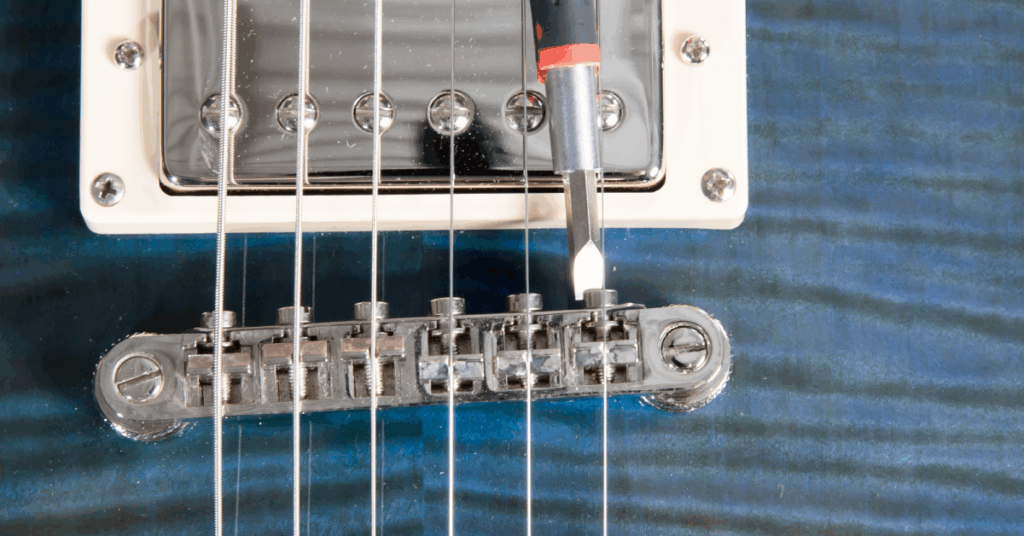
Acoustics are often played by beginners and often just OPEN CHORDS so you may not travel up the neck thus it’s not an issue. However there are some really nice acoustic guitars that have cutouts in the body to play acoustic leads high on the neck and this is where you could fall foul of a badly intonated guitar.
Playing the guitar it will sound great near the nut end but as you move higher the notes will sound off a lot of the time because your out of tune because the intonation is wrong.
Adjusting the intonation is a job you can do easily so lets first check your guitar or the potential new guitar for intonation before buying/playing it.
The distance between the Nut and the Bridge Saddle is super crucial! If you tune your guitar in open E tuning then press the same string on the 12th fret you will see if it has good intonation because it will also be intune there too.
How to Adjust Intonation.
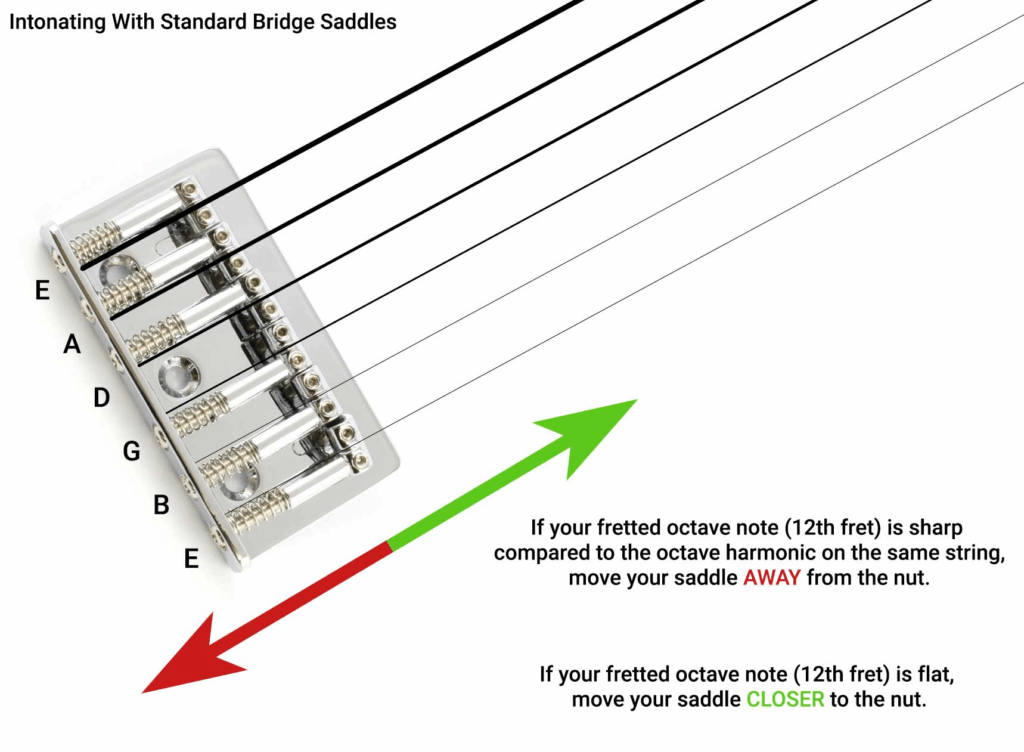
How to Check Intonation:
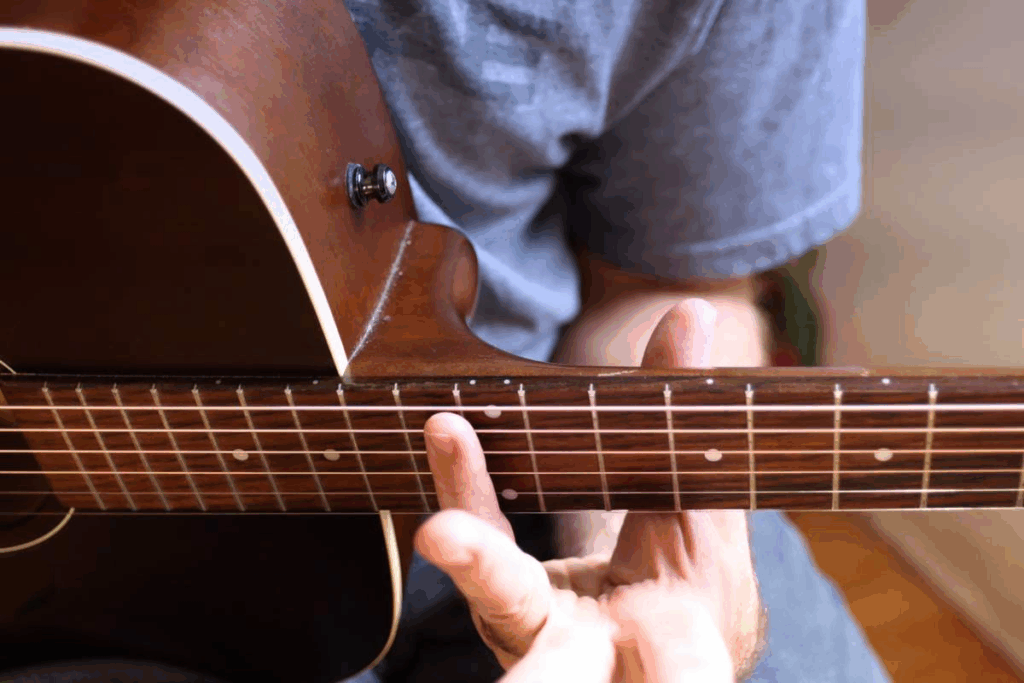
- Tune the Open String using a tuner.
- Play the 12th Fret Harmonic and compare it to the fretted 12th fret note.
- If the fretted note is sharp, move the saddle back (away from the neck).
- If the fretted note is flat, move the saddle forward (toward the neck).
Most electric guitars allow you to adjust saddle positions with a screwdriver. Acoustic guitars typically require professional adjustments at the bridge or nut.
Why Intonation Is Important:
- Consistent Tuning Across the Neck: Ensures that chords and solos sound clean and accurate at all positions.
- Better Recording Results: Crucial for multitrack recording where slight pitch differences become obvious.
- Improved Ear Training: Helps develop your sense of pitch and musicality.
Tuning Differences Between Acoustic and Electric Guitars
Acoustic Guitars:
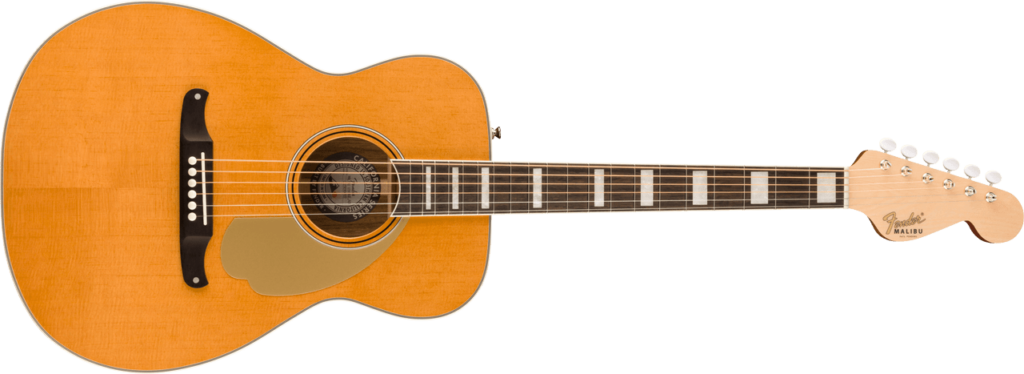
- Generally tuned using clip-on tuners.
- More susceptible to environmental factors (humidity, temperature).
- Heavier gauge strings can require more precise tuning efforts.
Electric Guitars:

- Often tuned through pedal tuners or apps via cable input.
- May include floating bridges (e.g., Floyd Rose), which complicate tuning and intonation.
- Lighter strings and adjustable hardware allow more refined intonation.
While the fundamental tuning process is the same, the tools and techniques vary slightly due to the physical and mechanical differences between the instruments.
What Is Standard Guitar Tuning?
Standard tuning is EADGBE, from the lowest (6th) to the highest (1st) string. It’s the most widely used tuning for:
- Beginner lessons
- Popular music
- Classical repertoire
- Basic chord shapes
This tuning strikes a balance between playability and musical range, making it ideal for most styles.
Are There Alternative Guitar Tunings?
Many genres of music use alternate tunings to create unique sounds, simplify fingerings, or accommodate vocal ranges. It can be your singer cannot sing a given song in the original key so they need to lower the key to manage the vocals.
Honestly people listening will never know you changed the key from the original. It also helps with chords because if a song is in a key like A# lets say, all your chords become more complicated as well so dropping the tuning of the guitar by a 1/2 step to Eb makes playing a lot simpler as well. They will be more traditional on open guitar shapes.
Here are some of the most popular ones:

1. Drop D (DADGBE)
- Lower the 6th string from E to D.
- Popular in: Rock, Metal, Grunge
- Allows for power chords with a single finger.
2. DADGAD
- Open and modal sounding.
- Popular in: Celtic, Folk, World Music
- Great for fingerstyle and open droning.

3. Open G (DGDGBD)
- Produces a G major chord when strummed open.
- Popular in: Blues, Slide Guitar, Rolling Stones
- Frequently used for bottleneck slide playing.
4. Open E (EBEG#BE)
- A favorite for blues and rock slide guitarists.
- Powerful and resonant.
5. Half-Step Down (Eb Ab Db Gb Bb Eb)

- Each string is tuned down a semitone.
- Used in: Metal, Rock (e.g., Jimi Hendrix, Stevie Ray Vaughan)
- Slightly easier to bend strings and gives a darker tone.
6. Drop C / Drop B
- Lower tunings ideal for heavy metal.
- Provide a deeper, more aggressive tone.
Each alternate tuning opens up new harmonic possibilities and can inspire different creative approaches to songwriting and improvisation.
Here’s a helpful guide showing which music genres prefer which open or alternate tunings, including why these tunings are chosen and how they shape the sound of each style:
Folk

- Popular Tunings:
- DADGAD
- Open G (DGDGBD)
- Open D (DADF#AD)
- Why They’re Used:
Folk guitarists love tunings that create rich, resonant, droning sounds and allow for modal melodies and easy fingerstyle patterns. - Sound Characteristics:
Open, airy, and melodic with easy access to open-string harmonies and drones.
Blues
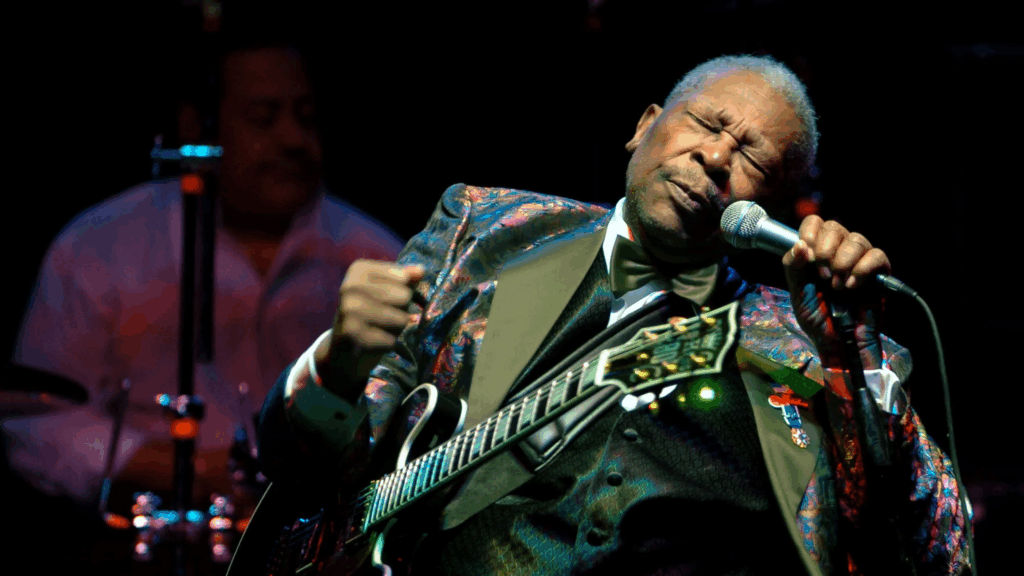
- Popular Tunings:
- Open G (DGDGBD)
- Open D (DADF#AD)
- Open E (EBEG#BE)
- Why They’re Used:
These tunings are perfect for slide guitar, which is common in blues. They allow the player to bar entire chords with a slide and add expressive bends. - Sound Characteristics:
Gritty, raw, soulful – excellent for Delta blues, bottleneck slide, and traditional fingerpicking styles.
Jazz

- Popular Tunings:
- Mostly Standard Tuning (EADGBE)
- Occasionally Drop D (DADGBE) for altered chord voicings
- Why They’re Used:
Jazz relies heavily on complex chord voicings and modal scales, so most players stick with standard tuning for consistency and theoretical access. - Sound Characteristics:
Clean, harmonically rich, and precise.
Rock

- Popular Tunings:
- Drop D (DADGBE)
- Open G (DGDGBD)
- Half-Step Down (Eb Ab Db Gb Bb Eb)
- Why They’re Used:
Rock players enjoy tunings that make power chords easier and add weight to riffs. Keith Richards (Rolling Stones) famously used Open G. - Sound Characteristics:
Powerful, punchy, and straightforward – suited for rhythmic riffs and singable leads.
Metal

- Popular Tunings:
- Drop C (CGCFAD)
- Drop B (BF#BEG#C#)
- C Standard (CFA#D#GC)
- Open C (CGCGCE) [progressive metal]
- Why They’re Used:
Lower tunings give metal a heavier, darker sound. Drop tunings also simplify fast, one-finger power chords, perfect for aggressive rhythm playing. - Sound Characteristics:
Deep, aggressive, tight, and brutal – perfect for palm-muted chugs and extended-range riffing.
🛠️ Summary Chart:
| Genre | Preferred Tunings | Sound Goals |
|---|---|---|
| Folk | DADGAD, Open G, Open D | Droning, melodic, modal |
| Blues | Open G, Open D, Open E | Slide-friendly, expressive |
| Jazz | Standard, Drop D | Chord voicings, harmonic depth |
| Rock | Drop D, Open G, Half-Step Down | Punchy riffs, easy power chords |
| Metal | Drop C, Drop B, C Standard, Open C | Heavier tone, fast riffing |
Final Thoughts.
Ensuring your guitar is in tune is a foundational skill that every guitarist must develop. From using tuners to understanding intonation and exploring alternate tunings, being in tune enhances every aspect of your playing.
Whether you’re a complete beginner or advancing your skills, tuning is a daily habit that builds your ear and your professionalism.
So grab your tuner, explore your fretboard, and make sure your guitar sings in perfect pitch.
The Author.
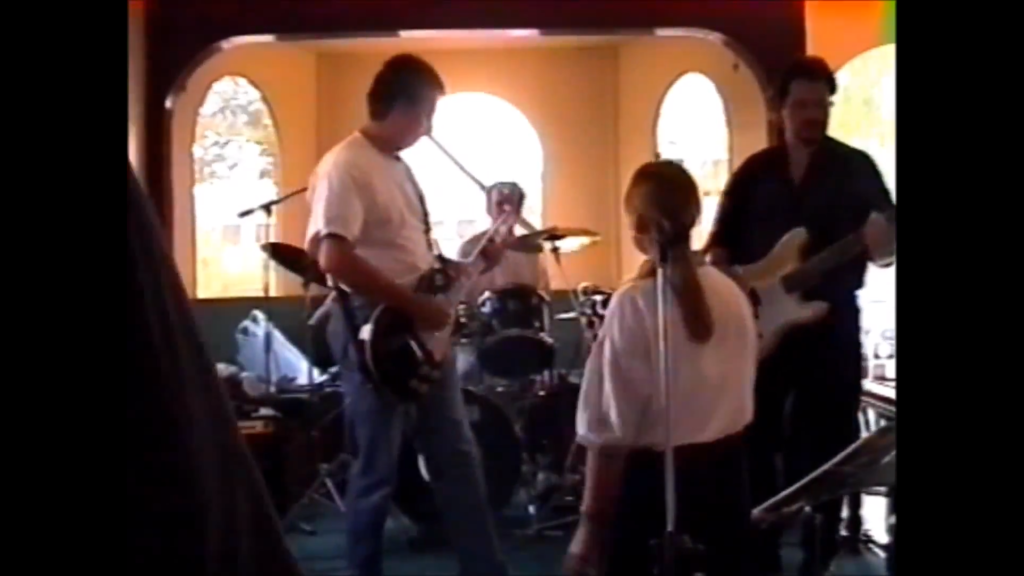
Brendon McAliece is a multi lingual expatriate Australian living in Thailand who speaks Thai, a number of its dialects and Lao. He has been playing guitar since he was 12 and continues to do so to this day.
He has performing in bands across the Middle East while contracting as a Aircraft Weapons Instructor with his 10 years of RAAF Armament Fitter experience and his maintained his love for playing guitar it continues to thrive today.
Also Visit:
DreamingGuitar.com – DreamingCoffee.com – LetsFlyVFR.com
Explore More from the Dreaming Network
As an Amazon affiliate I may earnon qualifying sales.
